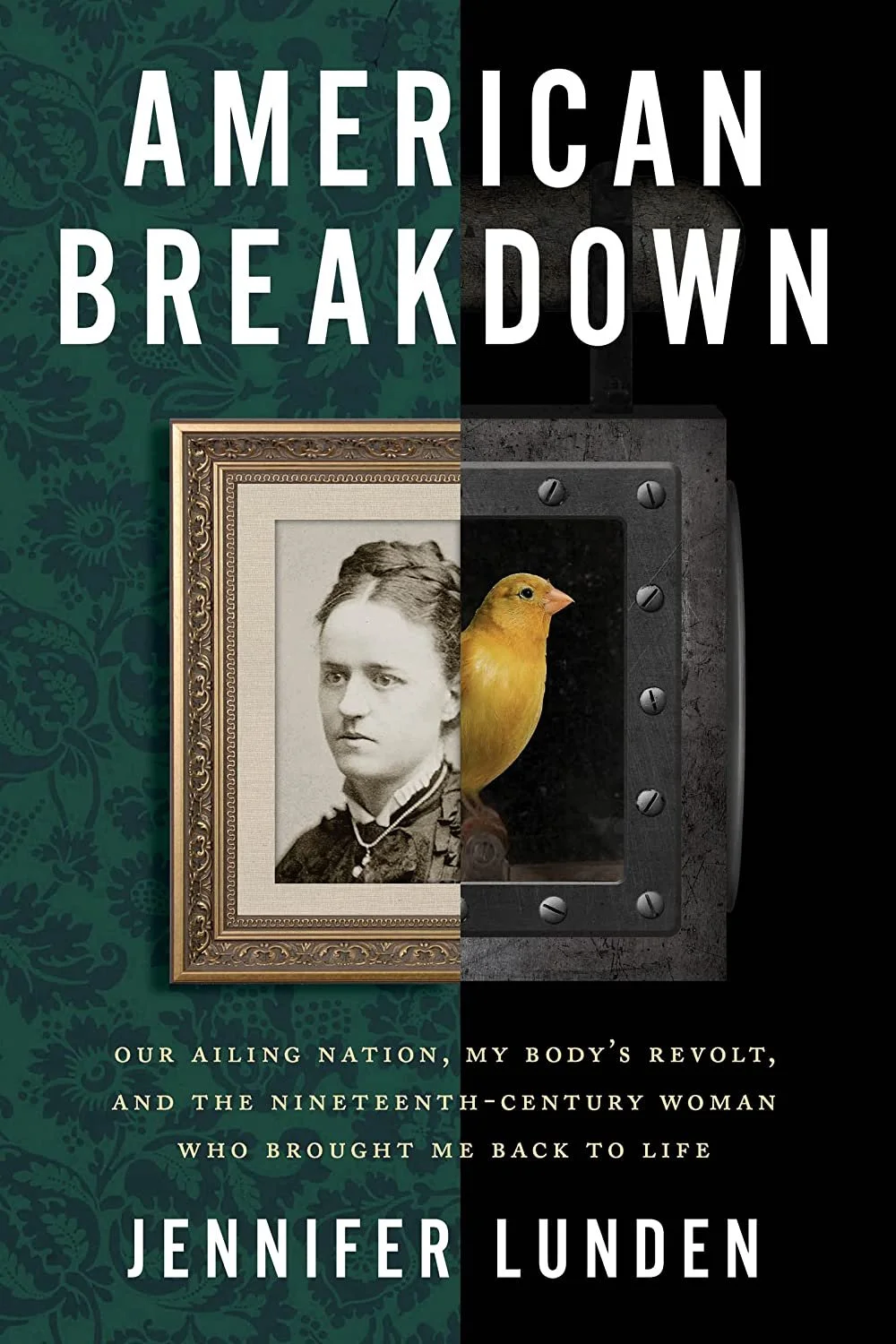American Breakdown by Jennifer Lunden
/American Breakdown: Our Ailing Nation, My Body’s Revolt, and the Nineteenth-Century Woman Who Brought Me Back to Life
By Jennifer Lunden
Harper Wave 2023
Chronic illness is a breakdown of our bodies, our health care, and our living conditions. In American Breakdown, Jennifer Lunden braids her own narrative of recovery from debilitating chronic illness with a manifesto on the dangers of chemicals, unregulated capitalism, failures of our healthcare system, and the diary of a chronically ill woman from the 19th century.
After months of nonstop fatigue, headaches, and other symptoms made it increasingly impossible for her to work even a low-intensity job, Lunden consulted multiple doctors. Unable to find the cause of her ailment, doctors recommended light exercise, mental health care, and returning to work. However, real physical symptoms can’t generally be solved with “just go back to work.” For example, if someone has diabetes, a doctor shouldn’t suggest doubling down on work instead of prescribing insulin. Like many chronically ill patients, Lunden looked for community resources and researched her own condition extensively.
The unfortunately named chronic fatigue syndrome, now called ME/CFS, has long been ridiculed by medical professionals and by the public. Debilitating symptoms affecting nearly every system of the body are casually dismissed as “all in your head.” Doctors thought people sought the diagnosis to avoid work or responsibilities. But the cruel thing about chronic illness is it affects one’s entire life. Socializing and having fun is as difficult as working when you can’t get out of bed. There’s nothing enjoyable or relaxing about headaches, fever, aches and pains, depression, brain fog, and digestive problems.
Lacking sympathy and understanding from friends, family, or doctors, Lunden unexpectedly found companionship in a diary from over a hundred years ago. Alice James was a 19th-century woman who documented her own unsolved fatigue, having an illness called neurasthenia at the time. Extracts from Alice James’ diary resonated with Lunden as James described the frustration of her physical limitations and inability to see friends and travel.
Lunden realized people have been documenting illness characterized by overwhelming fatigue for many years. These symptoms emerged long before our present-day manufactured chemicals and novel viruses. I was shocked to learn some 19th-century wallpaper contained arsenic, used to make vivid green and yellow dyes. The wallpaper leached into the air, especially in damp and moldy spaces, causing people to fall ill with fatigue, depression, and nausea. This is one of many examples the book presents showing unregulated capitalism at the expense of the human body. For example, the owner of an arsenic mine advocated for arsenic-containing products despite evidence they were dangerous.
Lunden mentions a fictional account of a woman with mysterious symptoms, bringing new insight to a short story I remember reading for a class. A contemporary of Alice James, a 19th-century woman with neurasthenia, Charlotte Perkins Gilman, published a short story titled “The Yellow Wall-Paper.” In the story, a woman falls ill at a vacation home. Her husband, a doctor, confines her to a room with disturbingly patterned wallpaper, which she tears off in chunks as everyone becomes sick. This was published as fiction, but a woman falling sick with no one believing her symptoms were real has occurred countless times in reality.
Arsenic may not be in our wallpapers today, but other toxicants are widespread in our homes. Lunden recounts using pesticides frequently to kill flea infestations on pets and growing up with a manicured, dandelion-free lawn. Multiple chemical sensitivity (MCS) has a large overlap in symptoms with ME/CFS (including headaches and fatigue). Symptoms can be triggered by everyday products containing volatile chemicals: air fresheners, detergent, soap, paint, new clothes, exhaust fumes, and asphalt.
Carbon monoxide poisoning and exposure to benzene and formaldehyde can also share many symptoms with MCS and ME/CFS. Benzene and formaldehyde, carcinogens, are used to make a huge variety of household items, such as carpets and furniture. Any home or office renovation can introduce a plethora of toxic chemicals. And the source of poisoning isn’t always external. Lunden had many amalgam dental fillings, causing high mercury levels. After getting them replaced with composite fillings over many months, her depression lifted.
Both historically and now, our healthcare system has failed women by not taking their symptoms seriously. Patients with chronic pain and fatigue have long been dismissed, misdiagnosed with 'hysteria,' or ridiculed by doctors. Evidence shows better outcomes for patients when doctors listen and collaborate. While many doctors are still not willing to change, due to sexism, insurance payouts, or ego, Lunden describes what effective, respectful medical treatment can look like, both as a patient and a care provider.
Lunden's narrative ends on a hopeful note. She takes control of her own medical treatment. She describes her recovery—and her relapses—as an optimistic outcome when ME/CFS and MCS are treated effectively. Her book helped me understand the chemical-laden environment we all live in, symptoms and experience of chronic illness, and how the problems of our medical system are based in sexism, denial, and lack of human connection and caring. I highly recommend this crucial book.
Rey Katz is a writer with published work in Catapult, POPSUGAR, Brevity’s Nonfiction Blog, and other publications. They earned a BS in Physics from MIT.
